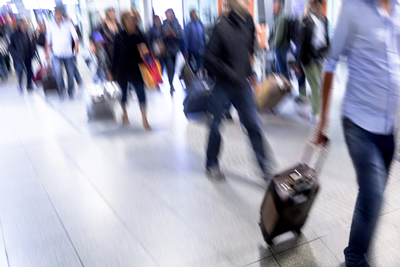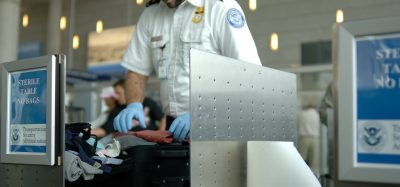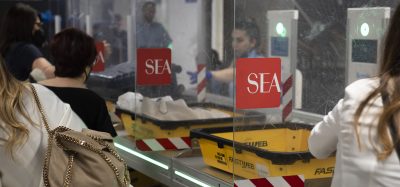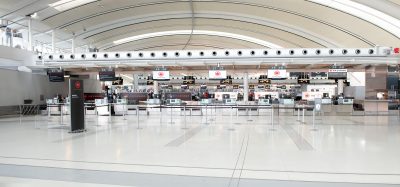Interview Spotlight: Managing Consultant, Antony Bridges
- Like
- Digg
- Del
- Tumblr
- VKontakte
- Buffer
- Love This
- Odnoklassniki
- Meneame
- Blogger
- Amazon
- Yahoo Mail
- Gmail
- AOL
- Newsvine
- HackerNews
- Evernote
- MySpace
- Mail.ru
- Viadeo
- Line
- Comments
- Yummly
- SMS
- Viber
- Telegram
- Subscribe
- Skype
- Facebook Messenger
- Kakao
- LiveJournal
- Yammer
- Edgar
- Fintel
- Mix
- Instapaper
- Copy Link
Posted: 20 September 2016 | International Airport Review | No comments yet
QinetiQ helps airports use cutting-edge technology to future-proof against evolving threats. Managing Consultant, Antony Bridges, discusses current industry trends…


What are the key challenges for airports when it comes to deploying security systems?
Security systems do not operate in isolation from other parts of the business. One of the greatest challenges we see is in quantifying the impact of the system on not just security but the wider organisation. New technology needs to be deployed into an existing system of compliance and regulation, a team of security officers who were selected for their skills in operating a previous system, and integrate with existing security technology and IT infrastructure. Deployment therefore demands an understanding of the implications on a range of business stakeholders. There is a requirement to provide evidence to the regulator in order to get approval for using a new system. There is a need to prepare and train maintenance and security staff, supervisors and managers. Retail and airlines are also directly affected. Deployments can be delayed and costs rapidly increased when implementations become a series of unwelcome surprises for those stakeholders.
What are the current trends in airport security technology?
We are seeing increasing deployment of remote screening systems, which allow multiple screeners to monitor a single machine or multiple machines to be monitored by a single screener. Combined with Advanced Cabin Baggage Screening this will have the potential to provide automated explosive detection, auto-clear some bags and create a far more dynamic screening system. Such a shift will have a significant impact on the screeners’ job design and the selection, training and performance management of the screening team.
How does QinetiQ support airports?
QinetiQ provides security modelling and consultancy to support airports and regulators in understanding the impact of changes to security systems on security performance and efficiency. We have a range of products to support human performance. The National X-Ray Competency Test (NXCT) is the UK competency test used to certify that screeners involved in cabin baggage, hold baggage or cargo and mail screening have the minimum level of competence required to perform effectively. It is used by all UK airports and we provide it under licence from the Department for Transport. We have been involved in Threat Image Projection (TIP) since it first came to the UK and provide a library of threat images which are projected by X-ray systems into passengers’ bags to support screeners in maintaining vigilance and to provide performance feedback. We have developed software (TIP-DMIST) to analyse the resulting data at the individual, team, terminal and airport level.
SPO-NX is a stand-off screening technology currently being trialled by the Transportation Security Administration. It has been successfully deployed in a number of non-aviation screening environments such rail stations and major events. The role of SPO-NX is to provide information to support the direction of constrained resources to where they may add greatest value in large crowds. This may be used where a complete search of all travellers at the level delivered at the security search point is not practical. SPO-NX provides the ability to detect larger objects beneath clothing; Behavioural Detection Officers or police teams operating landside can then be alerted to conduct further assessment and resolve the alarm creating layers of security. QinetiQ Optasense provides a perimeter security system. This Distributed Acoustic Sensing tool uses existing fibre optic cables to detect and identify movement along a perimeter. CCTV systems can then be used to confirm the intrusion and direct appropriate resources to intercept or prevent the incursion.
How do you see airport security evolving in the future?
Airport security will evolve due to scientific progress so I can see greater use of automated detection technologies and, in the longer term, this will include automated detection of the full range of threats hidden in bags. The challenge is that this may leave the human operator with the task of detecting the most difficult threats in a system that largely leaves them redundant. I would expect to see security still evolving in response to the changing threat; as a trend I would expect to see simple attack designs against the most vulnerable points rather than development of highly complex threats directed at the most sophisticated screening technologies. Finally, there will be an evolution based on business and consumer demands. Rising passenger numbers and a frustration amongst travellers are already resulting in faster, leaner systems, and we may see security adapt based on perceived traveller risk.
Biography


Antony Bridges, Managing Consultant, QinetiQ
Antony Bridges has 15 years’ experience in addressing human issues in complex security system working for organisations in the public and private sector. Delivering the required level of security whilst improving efficiency, he has worked across the physical and cyber security domains. Antony has supported a number of industry technical working groups including the IATA and ACI Smart Security Project, the ECAC Competency Testing Working Group and the UK ADS Transport Security Group.
















